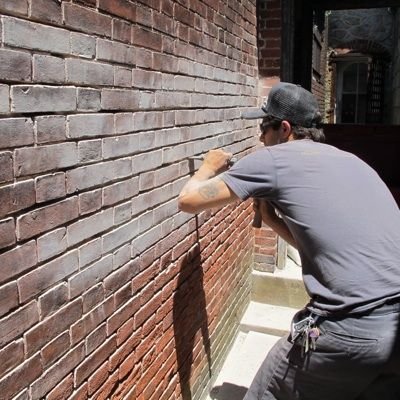The Enduring Appeal of Brick Masonry: A Timeless Choice for American Homes and Businesses
brick masonry, the masonry

Brick masonry, one of the oldest and most enduring building techniques, continues to be a popular choice for construction in the United States. From the charming brick facades of historic homes to the sturdy walls of modern commercial buildings, brick's versatility, durability, and aesthetic appeal have cemented its place in the American architectural landscape. This article explores the many facets of brick masonry, highlighting its benefits, applications, and the reasons why it remains a relevant and desirable material in today's construction industry.
A Legacy of Strength and Beauty: The History of Brick in America
Brick's history in America dates back to the colonial era. Early settlers, familiar with brick construction in their native lands, quickly recognized the advantages of this readily available and robust material. The masonry of clay deposits along the East Coast facilitated local brick production, leading to the construction of numerous iconic structures that still stand today. From the stately Georgian architecture of the 18th century to the industrial complexes of the 19th century, brick played a crucial role in shaping the American built environment. These historical examples serve as a testament to the longevity and resilience of brick masonry, showcasing its ability to withstand the test of time.
The Advantages of Brick Masonry: A Blend of Form and Function
The enduring popularity of brick masonry stems from a unique combination of practical benefits and aesthetic qualities. Here are some key advantages that make brick a compelling choice for builders and homeowners:
-
Durability and Longevity: Brick is an incredibly durable material, resistant to weathering, fire, and pests. Its inherent strength allows it to withstand harsh environmental conditions, making it ideal for both residential and commercial construction. Properly constructed brick walls can last for centuries, offering a long-term, cost-effective building solution.
-
Fire Resistance: Unlike wood-frame construction, brick is non-combustible, providing superior fire protection. This makes brick buildings safer and often leads to lower insurance premiums. In areas prone to wildfires, brick construction offers a significant advantage.
-
Energy Efficiency: Brick's thermal mass helps regulate indoor temperatures, reducing heating and cooling costs. The dense material absorbs and stores heat, slowing down temperature fluctuations and creating a more comfortable living environment. This energy efficiency contributes to lower utility bills and a smaller carbon footprint.
-
Sound Insulation: Brick walls provide excellent sound insulation, reducing noise transmission between rooms and from the outside. This makes brick homes and buildings quieter and more peaceful, creating a more conducive environment for living and working.
-
Low Maintenance: Brick requires minimal maintenance compared to other building materials. It doesn't need painting or sealing, and its resistance to rot and decay eliminates the need for frequent repairs. This low-maintenance characteristic translates to long-term cost savings for homeowners.
-
Aesthetic Versatility: Brick comes in a wide variety of colors, textures, and sizes, offering endless design possibilities. From classic red brick to contemporary shades of gray and white, brick can be used to create a variety of architectural styles. The versatility of brick allows architects and builders to achieve unique and visually appealing designs.
-
Sustainability: Brick is a sustainable building material, made from natural clay and other readily available resources. The durability of brick also contributes to its sustainability, as it reduces the need for frequent replacements. Furthermore, many brick manufacturers are implementing sustainable practices in their production processes.
Applications of Brick Masonry: From Homes to Highways
Brick masonry is a versatile construction technique used in a wide range of applications, including:
-
Residential Construction: Brick is a popular choice for building homes, from single-family residences to multi-story apartment buildings. Brick's durability, energy efficiency, and aesthetic appeal make it an ideal material for creating comfortable and long-lasting homes.
-
Commercial Construction: Brick is widely used in the construction of commercial buildings, such as office buildings, retail stores, and warehouses. Its strength, fire resistance, and low maintenance make it a practical choice for large-scale construction projects.
-
Infrastructure Projects: Brick is also used in infrastructure projects, such as bridges, tunnels, and retaining walls. Its strength and durability make it suitable for withstanding heavy loads and harsh environmental conditions.
-
Landscaping and Hardscaping: Brick can be used to create beautiful and functional outdoor spaces, such as patios, walkways, and garden walls. Its versatility and aesthetic appeal make it a popular choice for landscaping projects.
The Art of Bricklaying: Craftsmanship and Expertise
Bricklaying is a skilled trade that requires precision, experience, and attention to detail. A skilled bricklayer can create beautiful and structurally sound walls that will last for generations. The craftsmanship involved in bricklaying is an art form, passed down through generations of skilled tradespeople. Choosing experienced and qualified bricklayers is essential for ensuring the quality and longevity of any brick masonry project.
Choosing the Right Brick for Your Project
With so many different types of brick available, selecting the right brick for your project can be a daunting task. Factors to consider include:
-
Type of Brick: Different types of brick are available, including common brick, face brick, and paving brick. The choice of brick will depend on the specific application and aesthetic requirements of the project.
-
Color and Texture: Brick comes in a wide range of colors and textures, from smooth and uniform to rough and textured. The color and texture of the brick will significantly impact the overall appearance of the finished project.
-
Size and Shape: Bricks are available in various sizes and shapes, allowing for different bonding patterns and design possibilities.
-
Cost: The cost of brick can vary depending on the type, color, and texture. It's important to consider the budget for the project when selecting brick.
The Future of Brick Masonry: A Timeless Material in a Changing World
Despite the emergence of new building materials and techniques, brick masonry continues to be a relevant and desirable choice for construction in the United States. Its inherent advantages, combined with its timeless aesthetic appeal, ensure its place in the future of building. As sustainability becomes increasingly important, the natural and durable qualities of brick will likely further enhance its appeal. The enduring appeal of brick masonry is a testament to its versatility, resilience, and timeless beauty. It's a material that has stood the test of time and will continue to shape the American landscape for generations to come. For those seeking a combination of strength, beauty, and sustainability, brick masonry remains an excellent choice. Whether you’re building a new home, renovating an existing structure, or creating an outdoor living space, consider the enduring appeal of brick masonry. It’s a choice that will add value and character to your project for years to come.
What's Your Reaction?


















.jpg)